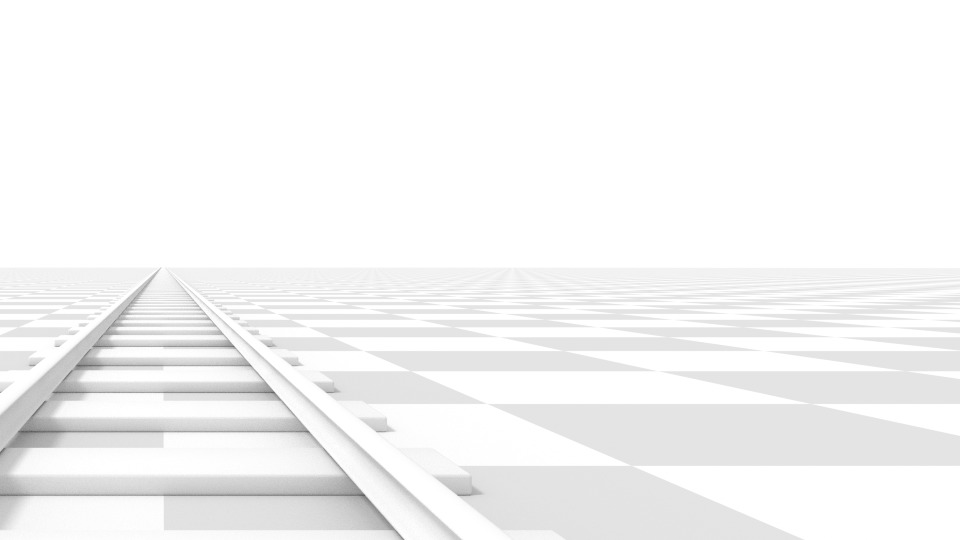Máy Quay Phim (Cameras)¶
A camera is an object that provides a means of rendering images from Blender. It defines which portion of a scene is visible in the rendered image.
Cameras are invisible in renders, so they do not have any material or texture settings. However, they do have Object and Editing setting panels available which are displayed when a camera is the active object.
Xem thêm
3D Viewport Camera Navigation for documentation about managing cameras in the viewport.
Tính Chất (Properties)¶
Tham Chiếu (Reference)
- Chế Độ (Mode):
Chế Độ Đối Tượng [Object Mode]
- Trình Biên Soạn (Editor):
Lăng Kính (Lens)¶
Thể Loại (Type)
The camera lens options control the way 3D objects are represented in a 2D image.
- Perspective (Phối Cảnh Xa Gần)
This matches how you view things in the real world. Objects in the distance will appear smaller than objects in the foreground, and parallel lines (such as the rails on a railroad) will appear to converge as they get farther away.
- Độ dài tiêu cự/kích thước ảnh trường (Focal Length/Field of View)
The Focal Length controls the amount of zoom, i.e. the amount of the scene which is visible all at once. Longer focal lengths result in a smaller FOV (more zoom), while short focal lengths allow you to see more of the scene at once (larger FOV, less zoom).
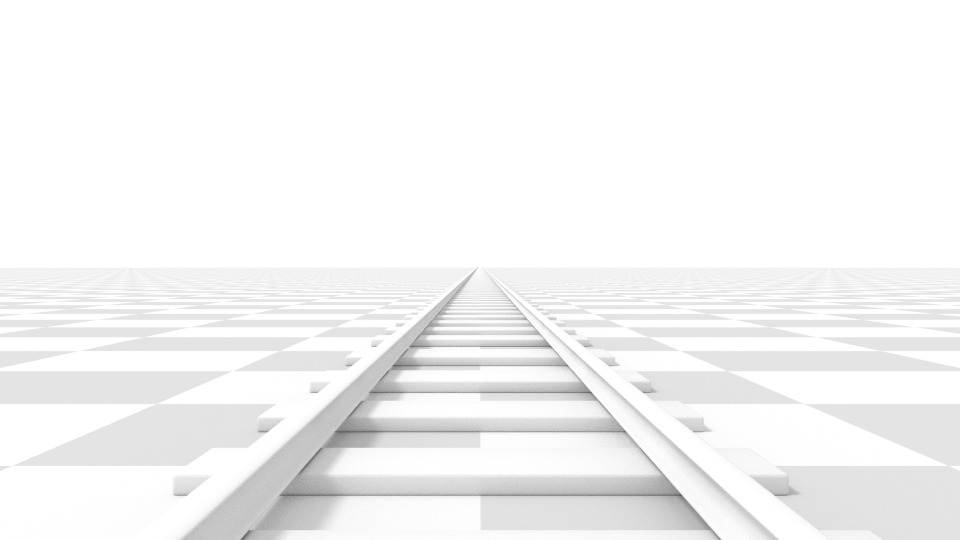
Perspective camera with 35 mm focal length.¶
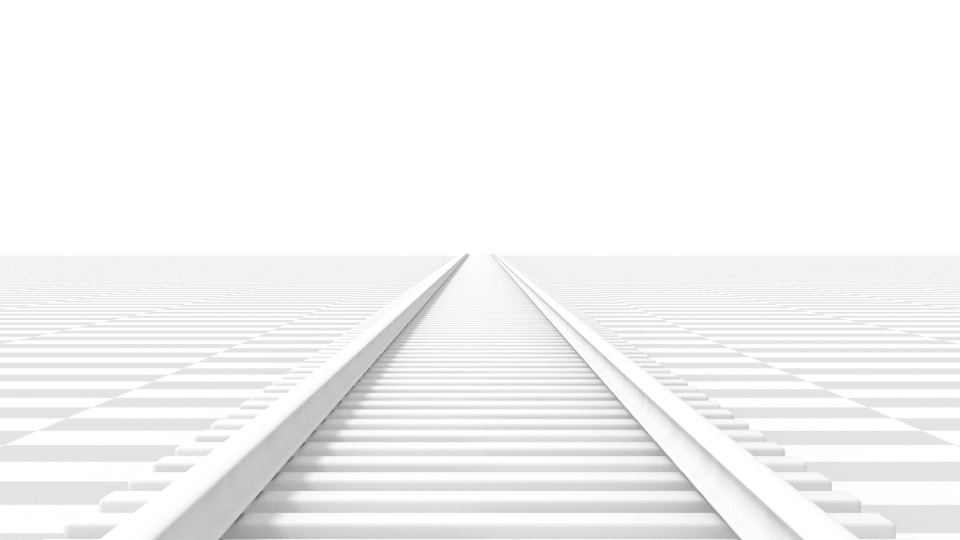
Perspective camera with 210 mm focal length instead of 35 mm.¶
- Đơn Vị Thấu Kính (Lens Unit)
The focal length can be set either in terms of millimeters or the actual Field of View as an angle.
Gợi ý
While the camera is moving towards an object the Focal Length property can be decreased to produce a Dolly Zoom camera effect, or vice versa.
video này (This video) demonstrates the "Lướt Thu-Phóng" camera effect.
- Orthographic (Trực Giao)
With Orthographic perspective objects always appear at their actual size, regardless of distance. This means that parallel lines appear parallel, and do not converge like they do with Perspective.
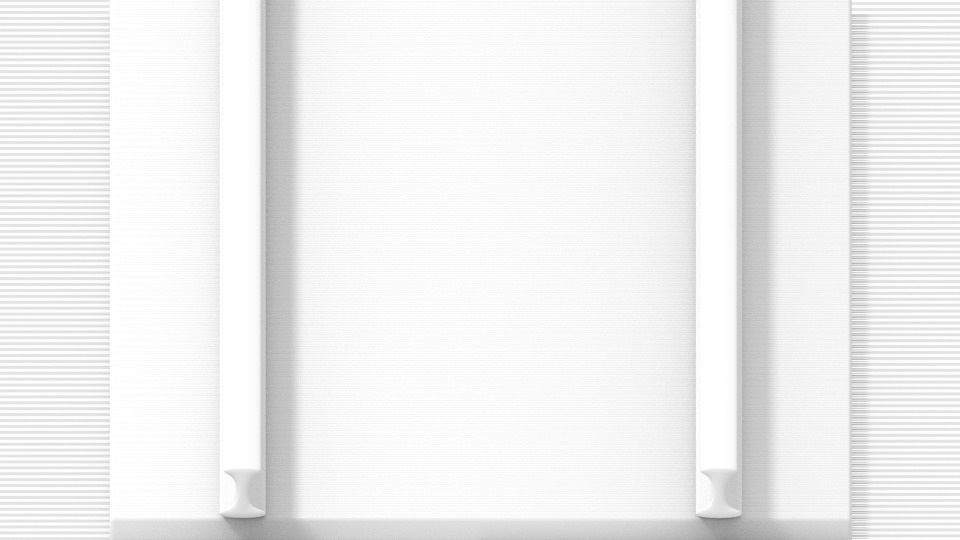
Render from the same camera angle as the previous examples, but with orthographic perspective.¶
- Tỷ Lệ của Phép Chiếu Trực Giao (Orthographic Scale)
This controls the apparent size of objects projected on the image.
Note that this is effectively the only setting which applies to orthographic perspective. Since parallel lines do not converge in orthographic mode (no vanishing points), the lens shift settings are equivalent to translating the camera in the 3D Viewport.
- Màn Ảnh Rộng (Panoramic)
Panoramic cameras only work in Cycles. See the Cycles panoramic camera settings for more information.
- Shift/Xê Dịch
Allows for the adjustment of vanishing points. Vanishing points refer to the positions to which parallel lines converge. In these render examples, the most obvious vanishing point is at the end of the railroad.
Notice how the horizontal lines remain perfectly horizontal when using the lens shift, but do get skewed when rotating the camera object.
Ghi chú
Using lens shift is equivalent to rendering an image with a larger FOV and cropping it off-center.
- Điểm Cắt Xén Khởi Đầu và Kết Thúc [Rõ Nét] (Clip Start and End)
The interval in which objects are directly visible. Any objects outside this range still influence the image indirectly, as further light bounces are not clipped.
Ghi chú
For viewport rendering, setting clipping distances to limited values is important to ensure sufficient rasterization precision. Ray tracing renders do not suffer from this issue so much, and as such more extreme values can safely be set.
Mẹo
When Limits in the Viewport Display panel is enabled, the clip bounds will be visible as two yellow connected dots on the camera's line of sight.
Depth of Field (Độ Sâu Trường Ảnh)¶
Real-world cameras transmit light through a lens that bends and focuses it onto the sensor. Because of this, objects that are a certain distance away are in focus, but objects in front and behind that are blurred.
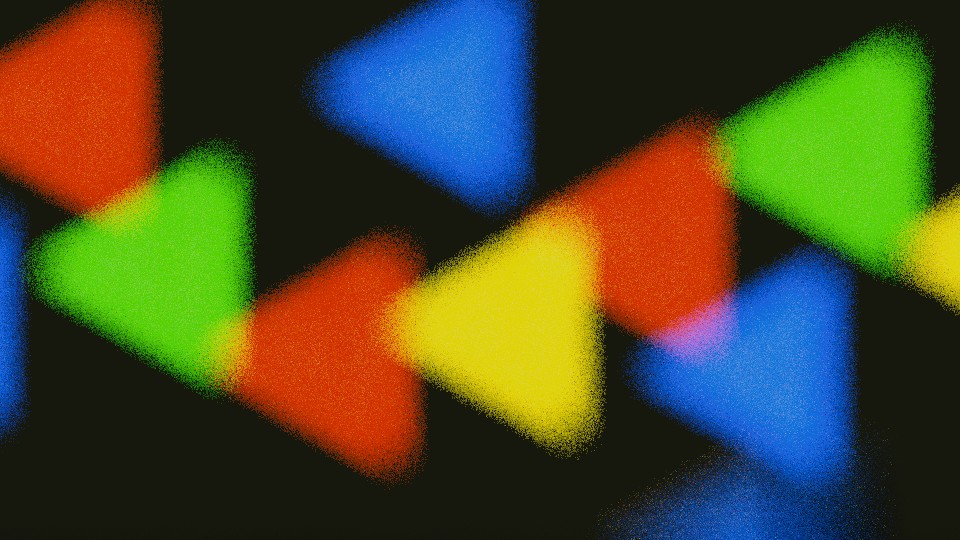
Ví dụ về sao chép/dán tư thế.¶
The area in focus is called the focal point and can be set using either an exact value, or by using the distance between the camera and a chosen object:
- Đối Tượng Tiêu Điểm (Focus Object)
Choose an object which will determine the focal point. Linking an object will deactivate the distance parameter.
- Khoảng Cách Lấy Nét Gần Nhất (Focal Distance)
Sets the distance to the focal point when no Focus Object is specified. This distance can be visualized in the 3D Viewport by enabling Limits in the camera's Viewport Display panel.
Gợi ý
Use the eyedropper icon or hover the mouse over the Focal Distance property and press E to enable the depth Depth Picker. Then LMB on a point in the 3D Viewport to sample the distance from that point to the camera.
Khẩu Độ (Aperture)¶
- Khẩu Độ (F-Stop)
F-Stop ratio that defines the amount of blurring. Lower values give a strong depth of field effect.
- Số Lá của Khẩu (Blades)
Total number of polygonal blades used to alter the shape of the blurred objects in the render, and render preview. As with the viewport, the minimum amount of blades to enable the bokeh effect is 3, resulting in a triangular-shaped blur.
- Xoay Chiều (Rotation)
Rotate the polygonal blades along the facing axis, and will rotate in a clockwise, and counter-clockwise fashion.
- Tỷ Số (Ratio)
Change the amount of distortion to simulate the anamorphic bokeh effect. A setting of 1.0 shows no distortion, where a number below 1.0 will cause a horizontal distortion, and a higher number will cause a vertical distortion.
Máy Quay Phim [Camera]¶
These settings adjusts properties that relate to a physical camera body. Several Presets can be chosen to match real-world cameras.
- Khít với Bộ Cảm Biến (Sensor Fit)
Adjusts how the camera's sensor fits within the outputs dimension adjusting the angular field of view.
- Tự Động (Auto):
Calculates a square sensor size based on the larger of the Resolution dimensions.
- Chiều Ngang (Horizontal):
Manually adjust the Width of the sensor, the Height is calculated based on the aspect ratio of the output's Resolution.
- Chiều Dọc (Vertical):
Manually adjust the Height of the sensor, the Width is calculated based on the aspect ratio of the output's Resolution.
- Kích Thước / Chiều Rộng, Chiều Cao (Size / Width, Height)
This setting is an alternative way to control the field of view, as opposed to modifying the focal length. It is useful to match a camera in Blender to a physical camera and lens combination, e.g. for motion tracking.
Vùng An Toàn (Safe Areas)¶
Safe areas are guides used to position elements to ensure that the most important parts of the content can be seen across all screens.
Different screens have varying amounts of Overscan (especially older TV sets). That means that not all content will be visible to all viewers, since parts of the image surrounding the edges are not shown. To work around this problem TV producers defined two areas where content is guaranteed to be shown: action safe and title safe.
Modern LCD/plasma screens with purely digital signals have no Overscan, yet safe areas are still considered best practice and may be legally required for broadcast.
In Blender, safe areas can be set from the Camera and Sequencer views.
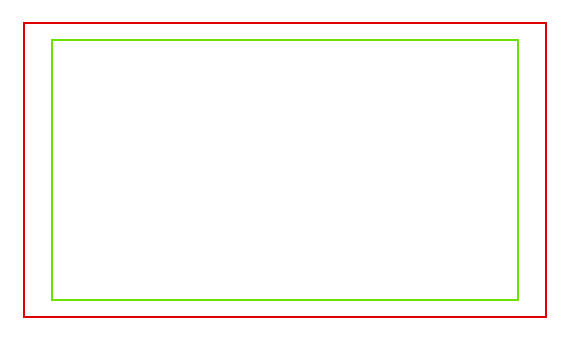
Red line: Action safe. Green line: Title safe.¶
The Safe Areas can be customized by their outer margin, which is a percentage scale of the area between the center and the render size. Values are shared between the Video Sequence editor and camera view.
- Mép Lề An Toàn cho Tựa Đề theo Chiều X/Y (Title Safe Margins X/Y)
Also known as Graphics Safe. Place all important information (graphics or text) inside this area to ensure it can be seen by the majority of viewers.
- Lề An Toàn cho Hành Động X/Y (Action Safe Margins X/Y)
Make sure any significant action or characters in the shot are inside this area. This zone also doubles as a sort of "margin" for the screen which can be used to keep elements from piling up against the edges.
Mẹo
Each country sets a legal standard for broadcasting. These include, among other things, specific values for safe areas. Blender defaults for safe areas follow the EBU (European Union) standard. Make sure you are using the correct values when working for broadcast to avoid any trouble.
Vùng An Toàn Trung Tâm (Center-Cut Safe Areas)¶
Center-cuts are a second set of safe areas to ensure content
is seen correctly on screens with a different aspect ratio.
Old TV sets receiving 16:9 or 21:9 video will cut off the sides.
Position content inside the center-cut areas to make sure the most important elements
of your composition can still be visible in these screens.
Blender defaults show a 4:3 (square) ratio inside 16:9 (widescreen).
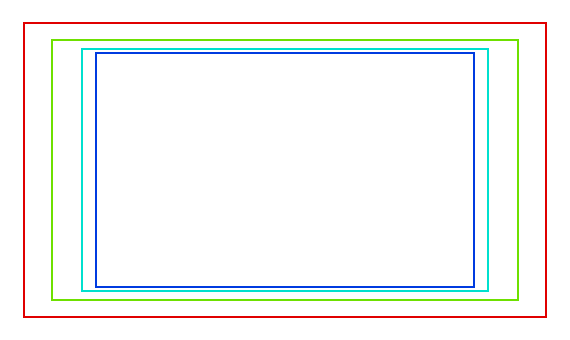
Cyan line: action center safe. Blue line: title center safe.¶
Ảnh Nền (Background Images)¶
A background picture in your camera can be very helpful in many situations: modeling is obviously one, but it is also useful when painting (e.g. you can have reference pictures of faces when painting textures directly on your model...), or animation (when using a video as background), etc.
- Nguồn của Nền (Background Source)
The source of the background image.
- Hình Ảnh (Image):
Use an external image, image sequence, video file or generated texture.
- Đoạn Phim (Movie Clip):
Use one of the Movie Clip data-blocks.
- Đoạn Phim đang Hoạt Động (Active Clip)
Display a Movie Clip from the scene's Active Clip.
- Kết Xuất Không Biến Dạng (Render Undistorted)
Display the background image using undistorted proxies when available.
- Kích Thước Kết Xuất của bản Đại Diện (Proxy Render Size)
Select between full (non-proxy) display or a proxy size to draw the background image.
Xem thêm
To build a proxy, the Movie Clip Editor Proxy settings have to be used. Otherwise the proxy settings here have no effect.
- Color Space (Không Gian Màu Sắc)
The color space the image or video file uses within Blender.
- Hiển Thị như Bản Kết Xuất (View as Render)
Áp Dụng the quản lý màu sắc (color management) sắp đặt khi displaying this hình ảnh trên màn hình.
- Độ Đục (Opacity)
Controls the transparency of the background image.
- Chiều/Độ Sâu (Depth)
Choose whether the image is shown behind all objects, or in front of everything.
- Phương Pháp Khung Hình (Frame Method)
Controls how the image is placed in the camera view.
- Kéo Giãn (Stretch):
Forces the image dimensions to match the camera bounds (may alter the aspect ratio).
- Khít Vừa (Fit):
Scales the image down to fit inside the camera view without altering the aspect ratio.
- Cắt Xén (Crop):
Scales the image up so that it fills the entire camera view, but without altering the aspect ratio (some of the image will be cropped).
- Dịch Chuyển X, Y (Offset X, Y)
Positions the background image using these offsets.
In orthographic views, this is measured in the normal scene units. In the camera view, this is measured relative to the camera bounds (0.1 will offset it by 10% of the view width/height).
- Xoay Chiều (Rotation)
Rotates the image around its center.
- Tỷ Lệ (Scale)
Scales the image up or down from its center.
- Đảo Lật (Flip)
- X
Swaps the image around, such that the left side is now on the right, and the right now on the left.
- Y
Swaps the image around, such that the top side is now on the bottom, and the bottom now on the top.
Ghi chú
Movie Clips or images with view as render are only visible behind objects when film transparency is enabled or the scene world is disabled in the viewport.
Hiển Thị Cổng Nhìn (Viewport Display)¶

Camera view displaying safe areas, sensor and name.¶
- Kích Thước (Size)
Size of the camera visualization in the 3D Viewport. This setting has no effect on the render output of a camera. The camera visualization can also be scaled using the standard Scale S transform key.
- Hiển Thị (Show)
- Giới Hạn (Limits)
Shows an orange line indicating the Clip Start and End values, as well as a yellow cross indicating the Focus Distance. If the Focus Distance gizmo is enabled in the 3D Viewport's gizmo settings, this cross can also be dragged with the mouse to adjust the distance.
- Sương Mù (Mist)
Toggles viewing of the mist limits on and off. The limits are shown as two connected white dots on the camera line of sight. The mist limits and other options are set in the World panel, in the Mist section.
- Bộ Cảm Biến (Sensor)
Displays a dotted frame in camera view.
- Tên [Name]
Toggle name display on and off in camera view.
Khung Bố Cục (Composition Guides)¶
Composition Guides enable overlays onto the camera display that can help when framing a shot.
- Luật Một Phần Ba (Thirds)
Adds lines dividing the frame in thirds vertically and horizontally.
- Trung Tâm (Center)
- Trung Tâm (Center)
Adds lines dividing the frame in half vertically and horizontally.
- Chéo Góc (Diagonal)
Adds lines connecting opposite corners.
- Tỷ Lệ Vàng (Golden)
- Tỷ Số (Ratio)
Divides the width and height into Golden proportions (about 0.618 of the size from all sides of the frame).
- Tam Giác A (Triangle A)
Displays a diagonal line from the lower left to upper right corners, then adds perpendicular lines that pass through the top left and bottom right corners.
- Tam Giác B (Triangle B)
Same as A, but with the opposite corners.
- Hài Hoà (Harmony)
- Tam Giác A (Triangle A)
Displays a diagonal line from the lower left to upper right corners, then lines from the top left and bottom right corners to 0.618 the lengths of the opposite side.
- Tam Giác B (Triangle B)
Same as A, but with the opposite corners.
- Khung Cắt Cảnh (Passepartout)
This option darkens the area outside of the camera's field of view. The opacity of the passepartout can be adjusted using the value slider.
Mẹo
If the Passepartout is fully opaque, Blender will make optimizations to speed up the rendering of areas inside the camera view.
